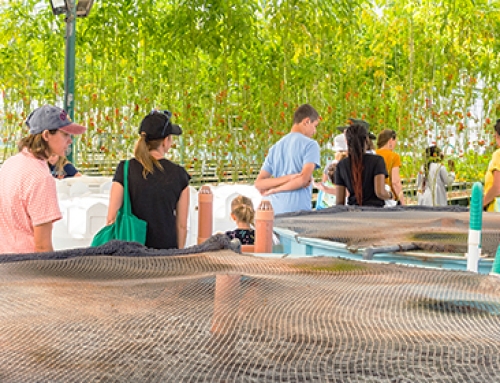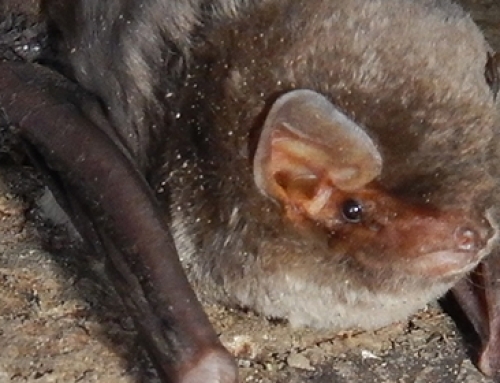The veterinarians of the Udine Unit of the Istituto Zooprofilattico Sperimentale delle Venezie (IZSVe) have described for the first time a case of leptospirosis in a wolf in Europe. The animal, a male aged approximately 7 months, was fatally hit by a vehicle in the province of Pordenone and referred for post-mortem examination for health assessment due to the injuries sustained, and further analyses were performed according to gross pathological lesions in accordance with an ongoing research project (RC 18/16 for Echinococcus multilocularis).
Serological and molecular approaches to identify Leptospira sp.

The veterinarians of the Udine Unit of the IZSVe have described for the first time a case of leptospirosis in a wolf in Europe. The animal, a male aged approximately 7 months, was fatally hit by a vehicle in the province of Pordenone and analyses were performed according to gross pathological lesions. The leptospira was identified as Leptospira kirschneri, serogroup Pomona, serovar Mozdok (ST117), a strain that is already known to circulate in Italy in swine and dogs
Preliminary biomolecular diagnostic analyses revealed the presence of a pathogenic leptospira in the kidneys, while the serological screening for antibodies against leptospires showed reactivity towards the three serogroups, Grippotyphosa, Pomona, Icterohaemorrhagiae. Histopathological assessment of the kidney identified chronic interstitial nephritis.
The samples were then referred to the National Reference Centre for Leptospirosis (NRCL) at the Istituto Zooprofilattico Sperimentale Lombardia ed Emilia Romagna, Brescia (Italy), for molecular typing, the stage when the pathogen is given its full name. The leptospira was identified as Leptospira kirschneri, serogroup Pomona, serovar Mozdok (ST117).
This strain is already known to circulate in Italy in swine and dogs, whereas the serogroup Pomona, serovar Pomona has to date been isolated in wild boar (Sus scrofa). The serovar Mozdok likely circulates also among wild boars, given the homology with domestic swine, which means that wild boar could act as a reservoir of infection for the wolf. Epidemiologically speaking, the prey-predator relationship between wild boar and wolf is consistent with direct or indirect infection transmission.
In our case, the wolf would represent an accidental host rather than a reservoir of infection, making it an interesting epiphenomenon and a sentinel for environmental transmission of leptospiral serogroups in the area. The detection was published in the International Journal of Environmental Research and Public Health (IJERPH).
Wolves and leptospirosis in Friuli Venezia Giulia

Leptospirosis is a prominent zoonotic disease, which is endemic to Friuli Venezia Giulia and causes clinical cases and deaths in dogs. Seropositivity has also been found among wild carnivores, although conditions associated with pathogenic leptospires are uncommon: in Europe no clinical forms or anatomopathological lesions due to leptospirosis had previously been reported in the wolf. The appearance of the disease in wolves is linked to the natural recolonization currently involving the entire Alpine area
Leptospirosis is a prominent zoonotic disease, which is endemic to Friuli Venezia Giulia, in north-eastern Italy, which causes clinical cases and deaths in dogs despite widespread vaccination. The disease has a high priority ranking in the “Health Surveillance Plan for Wild Fauna” of the Region of Friuli Venezia Giulia.
Although reservoirs of infection are recognised to exist in wild environments, particularly among rodents, seropositivity has also been found among wild carnivores, although conditions associated with pathogenic leptospires are uncommon. In Europe no clinical forms or anatomopathological lesions due to leptospirosis had previously been reported in the wolf. Positive serological tests have been documented in Spain while analyses conducted in central Italy proved negative.
The appearance of the disease in wolves is linked to the natural recolonization currently involving the entire Alpine area. The distribution of the Italian wolf (Canis lupus italicus) from the Apennines to the Alps and its encounter with Dinaric-Balkan populations (Canis lupus lupus) has led to the establishment and settlement of family units in north-eastern Italy. Apart from the sporadic presence of animals from Slovenia, the first wolf couple to be formed in the area was identified in 2013. The population is currently estimated to number approximately 15-25 across the Region as a whole.
The wolf (Canis lupus), together with the golden jackal (Canis aureus), the otter (Lutra lutra) and the European wildcat (Felis silvestris), is one of the protected species around which scientific collaboration has developed in recent years among various entities, such as the IZSVe, the University of Udine, the Natural History Museum of Udine and the Regional Forestry Corps.
Regularly conducted health-related investigations in wild species will allow the collection of additional epidemiological information on the transmission of strains of Leptospira in the area.
Read the scientific article in IJERPH »






